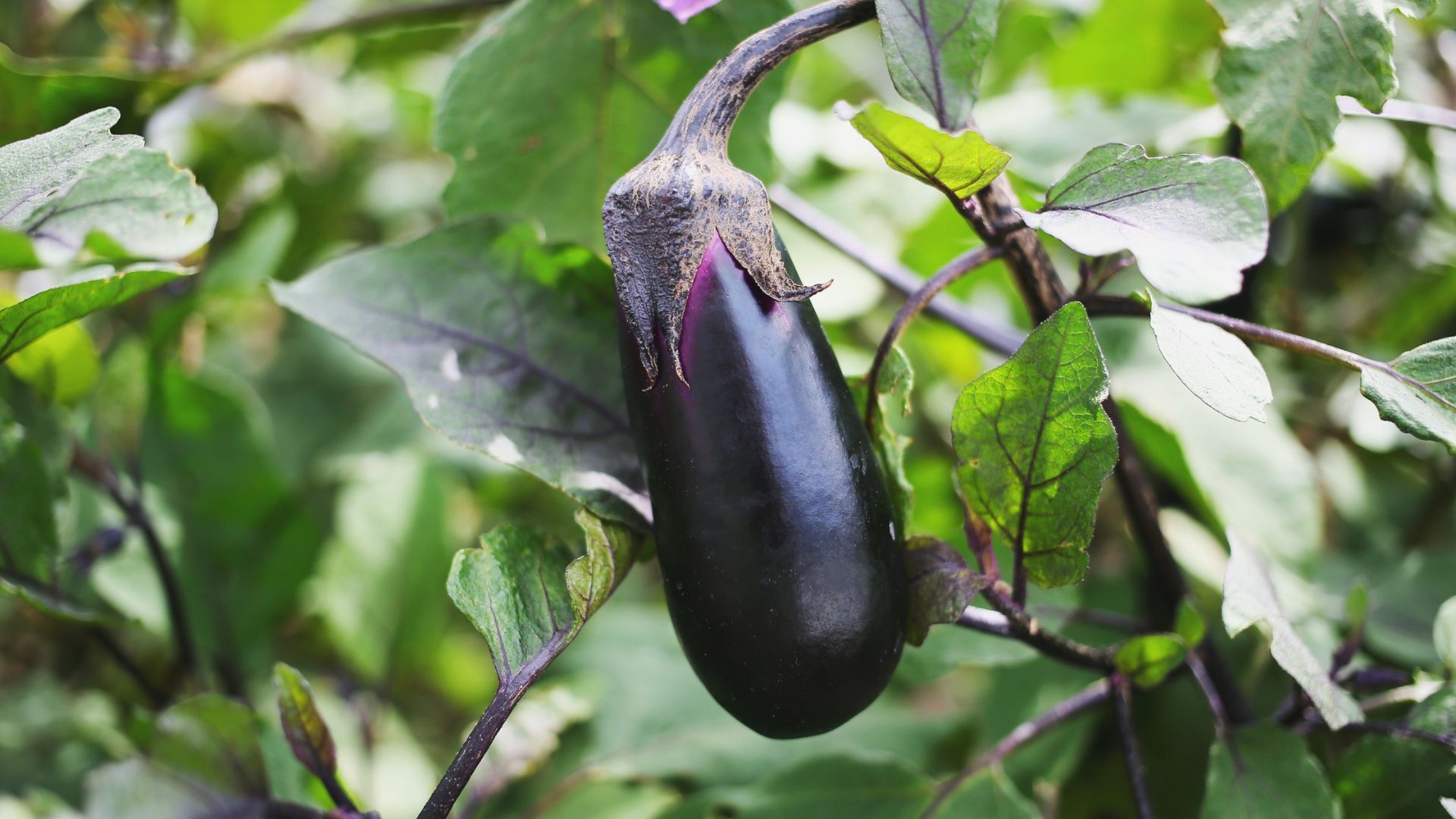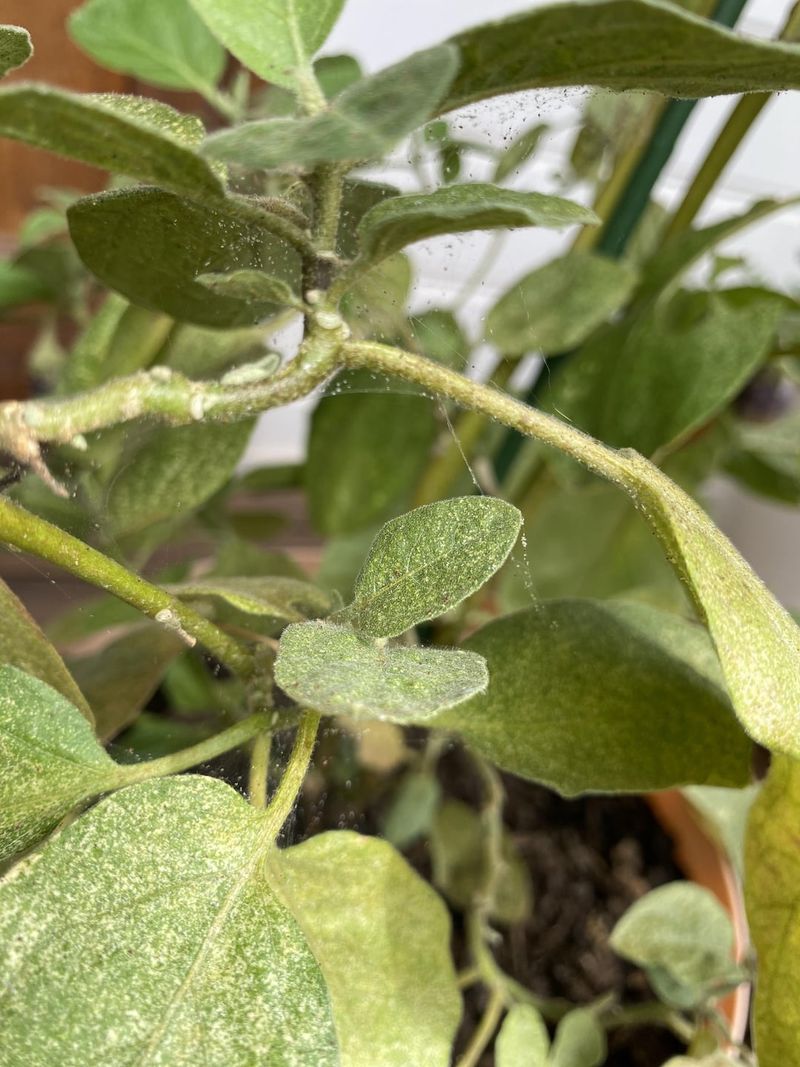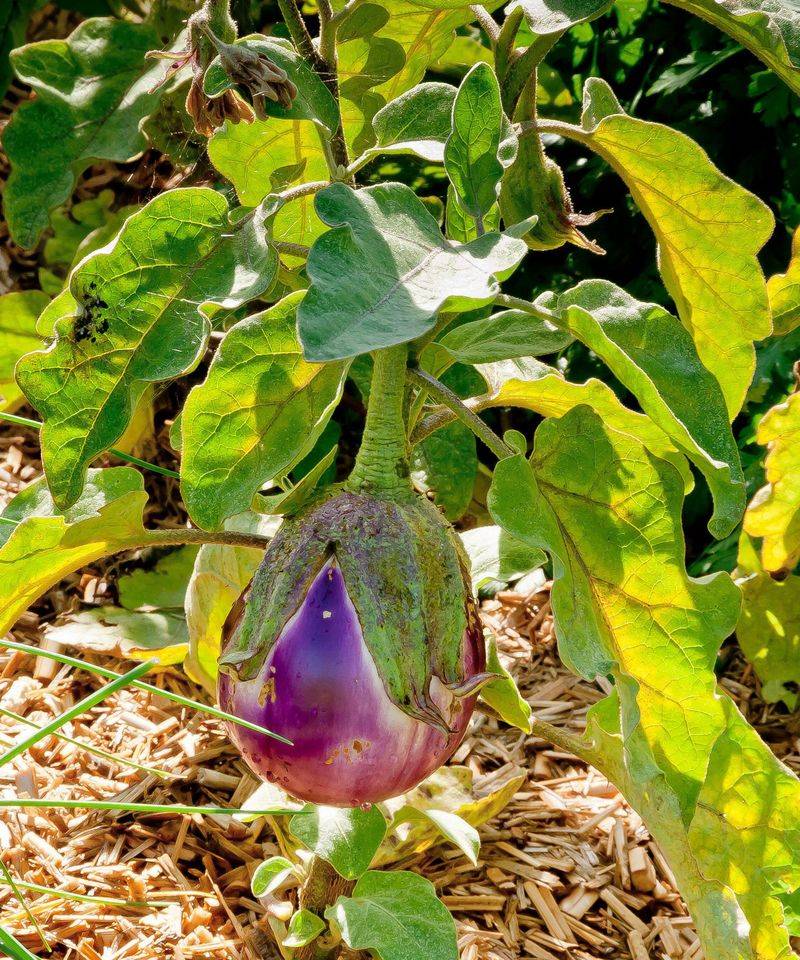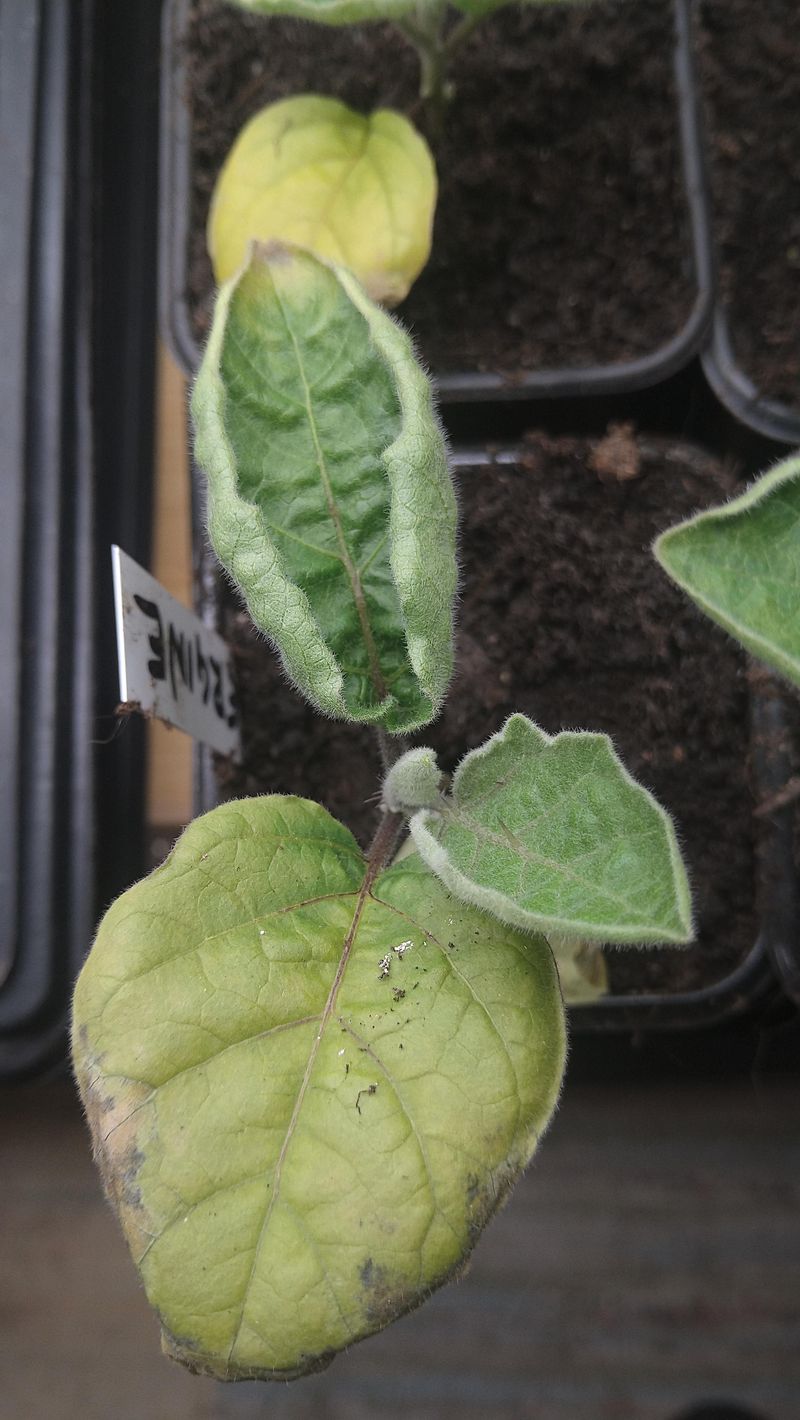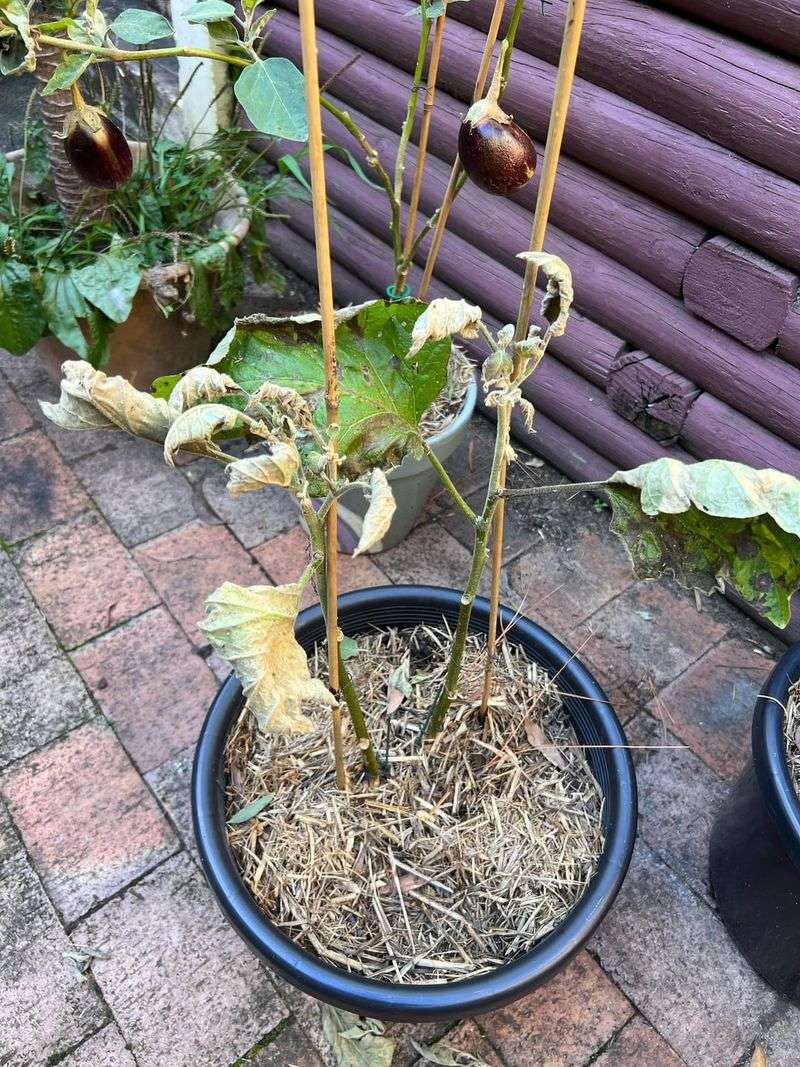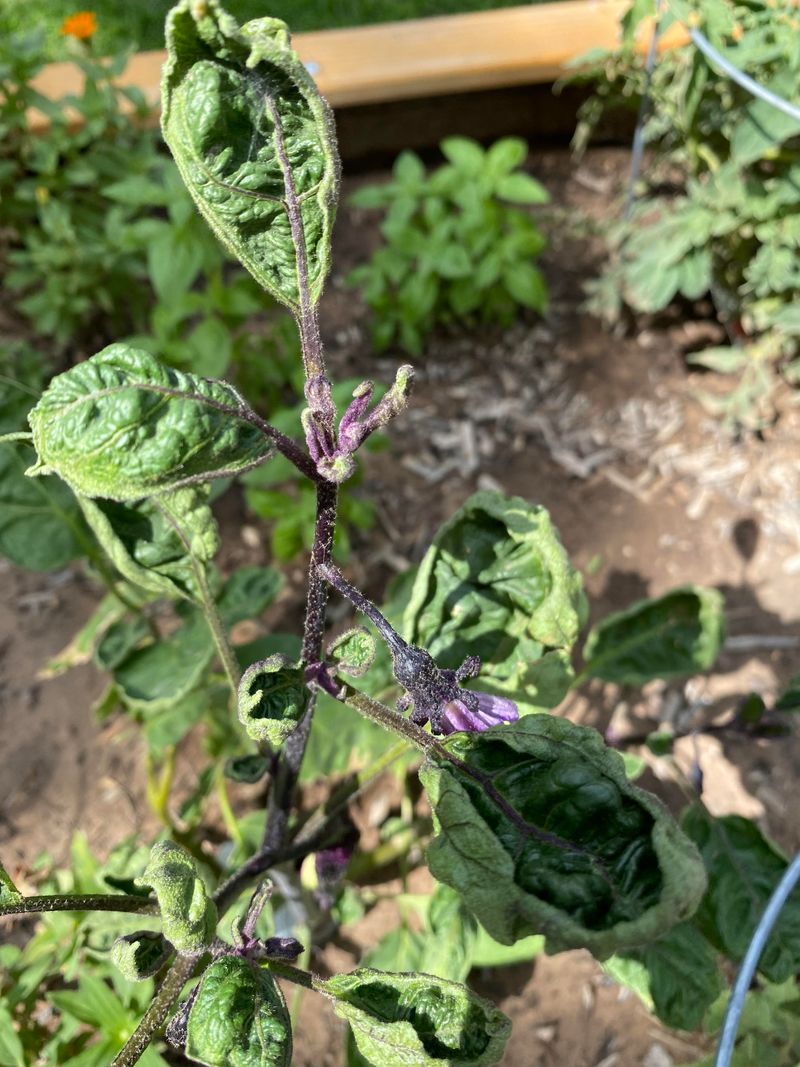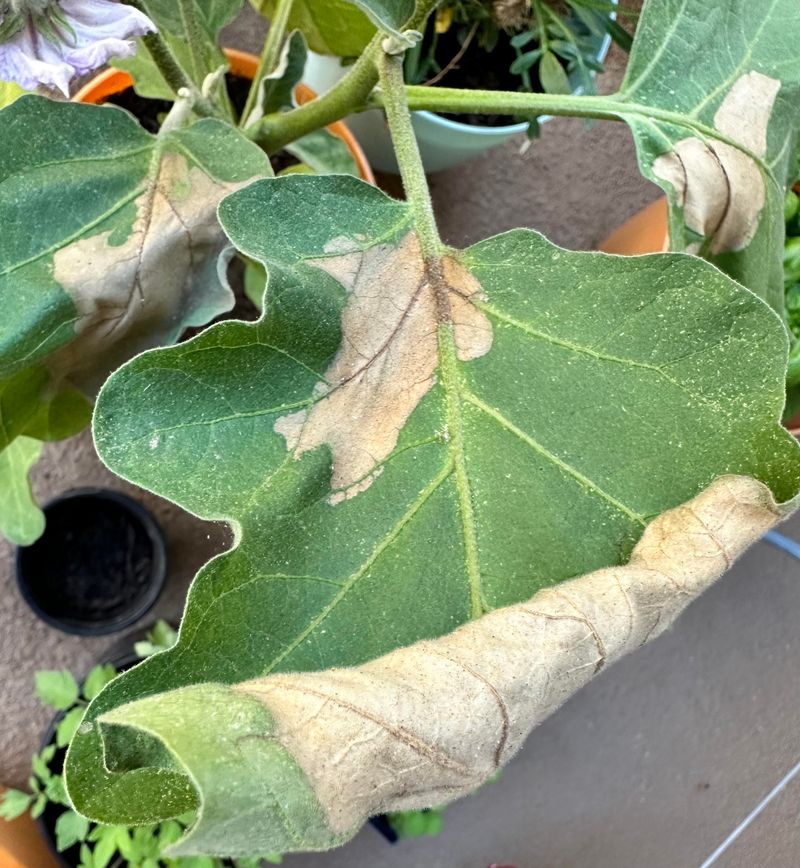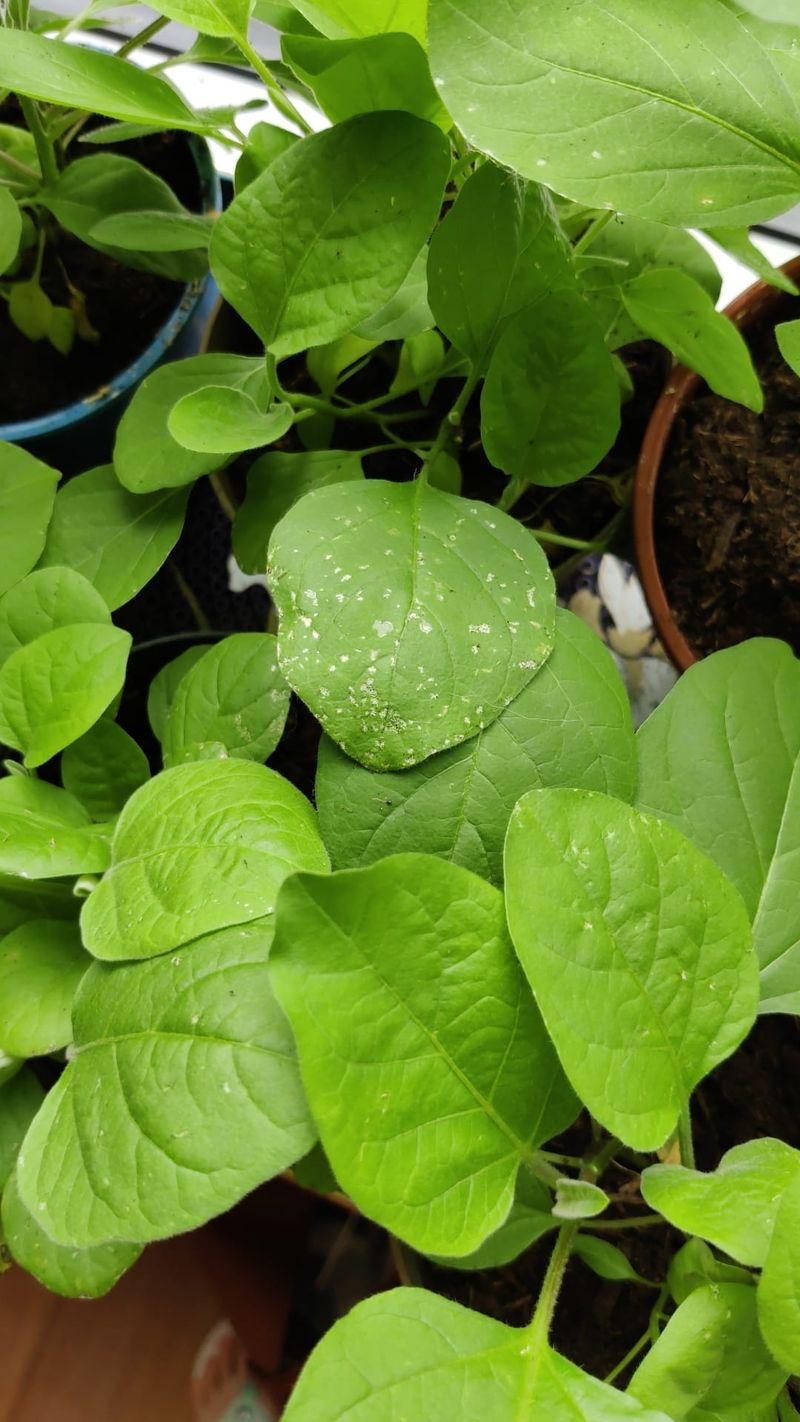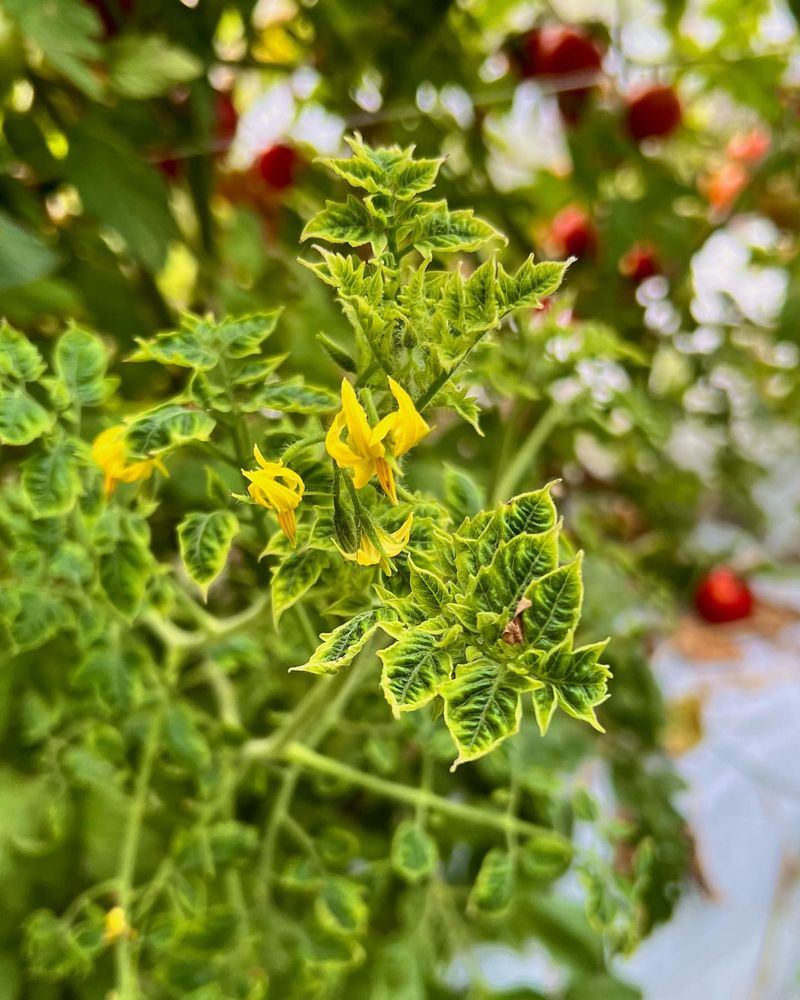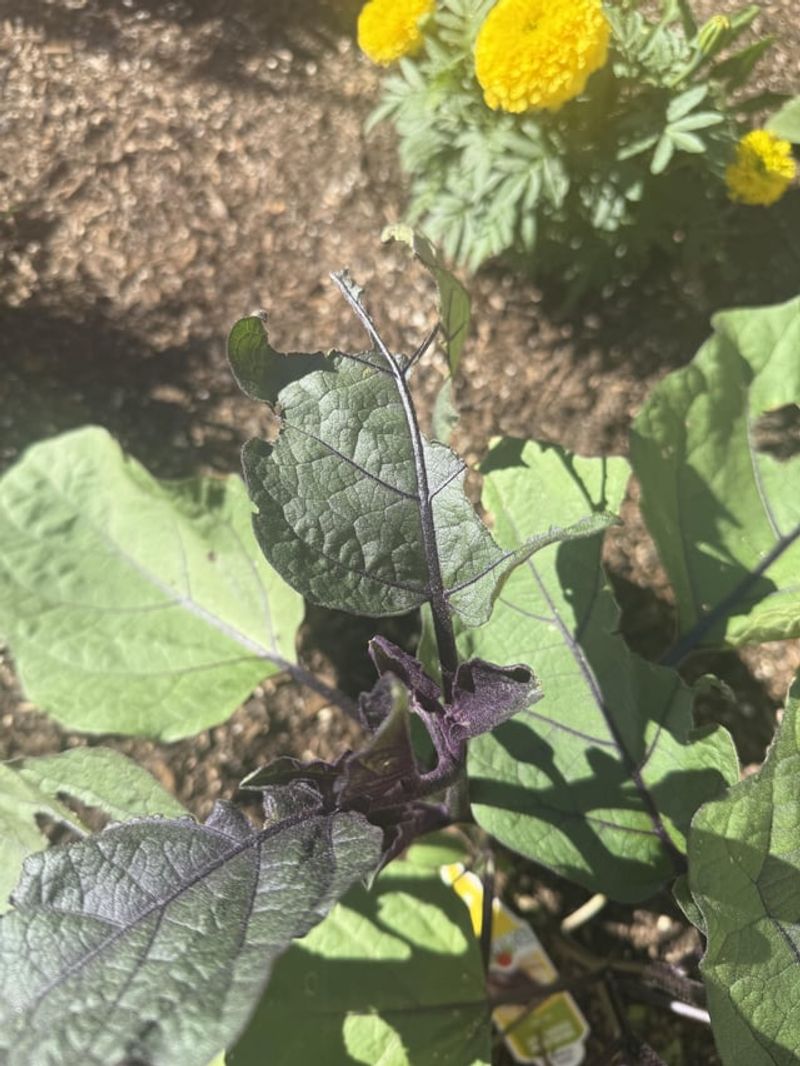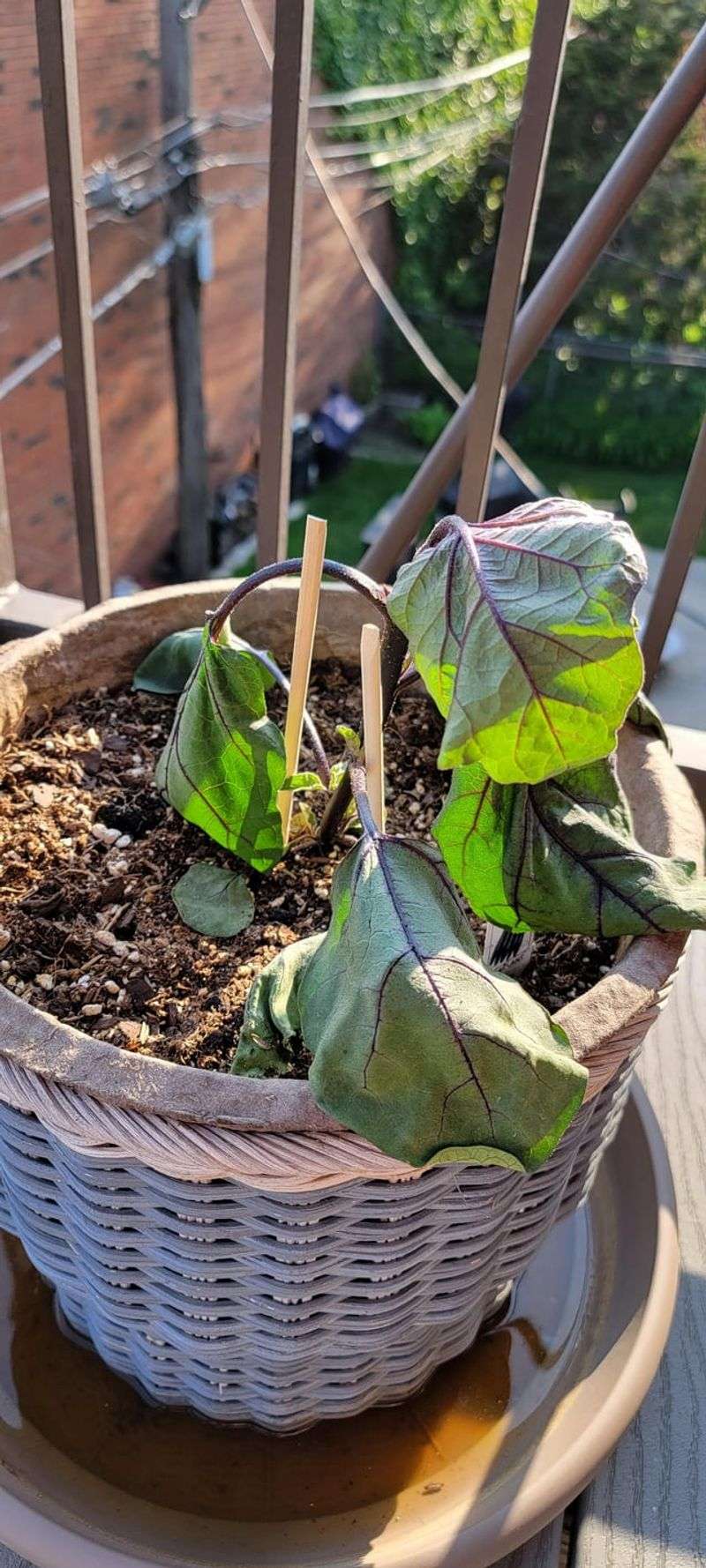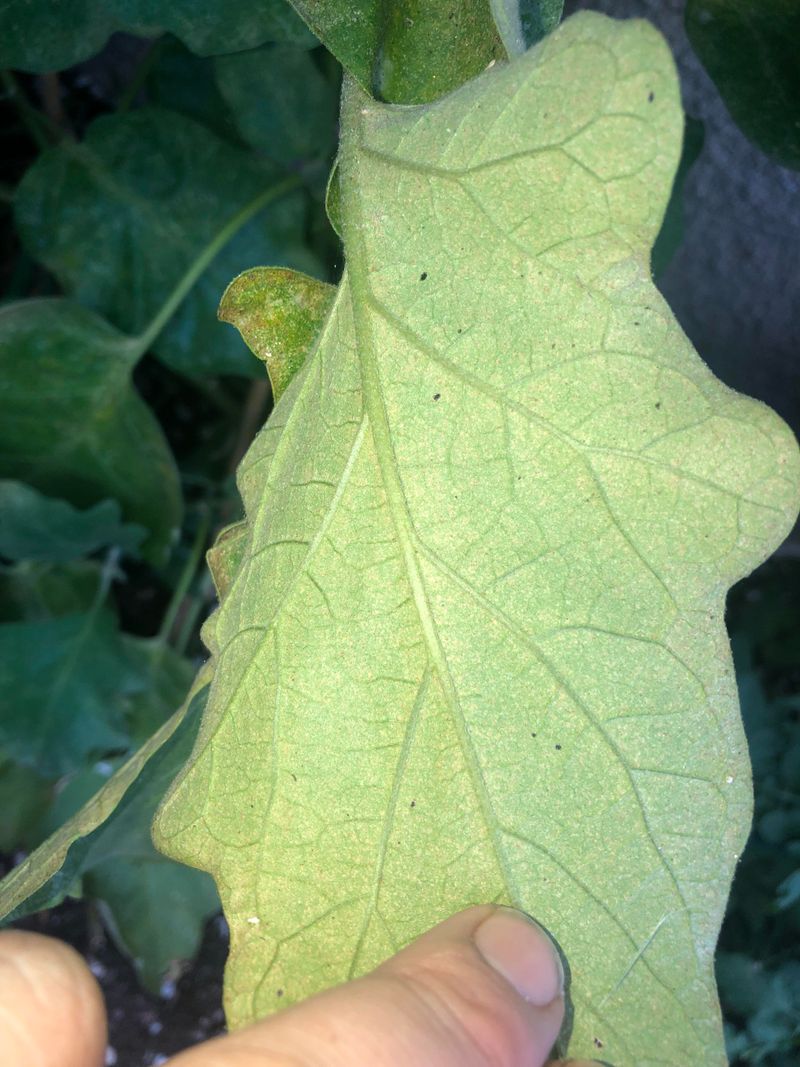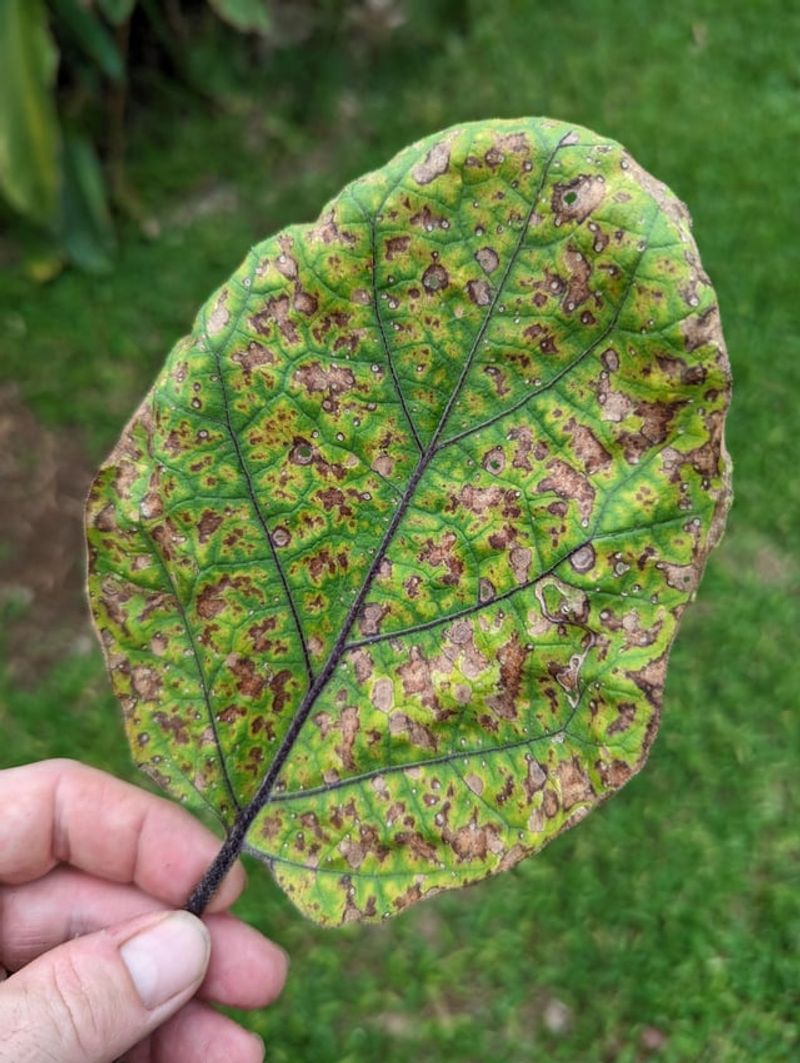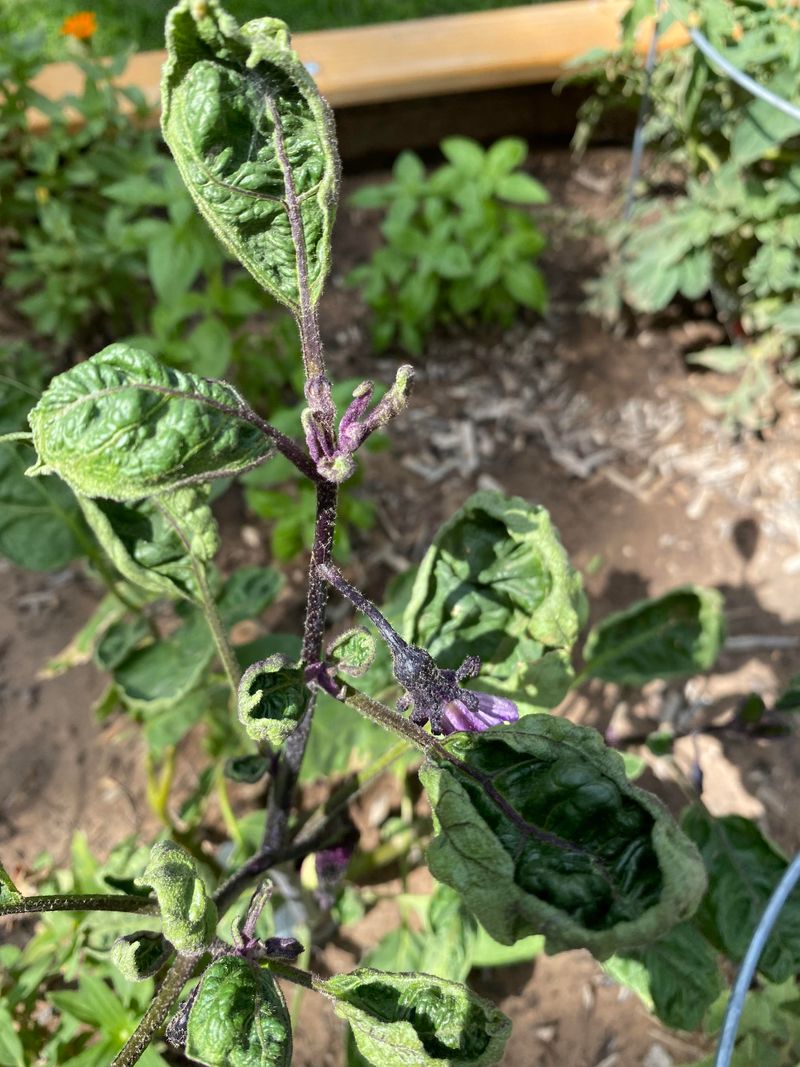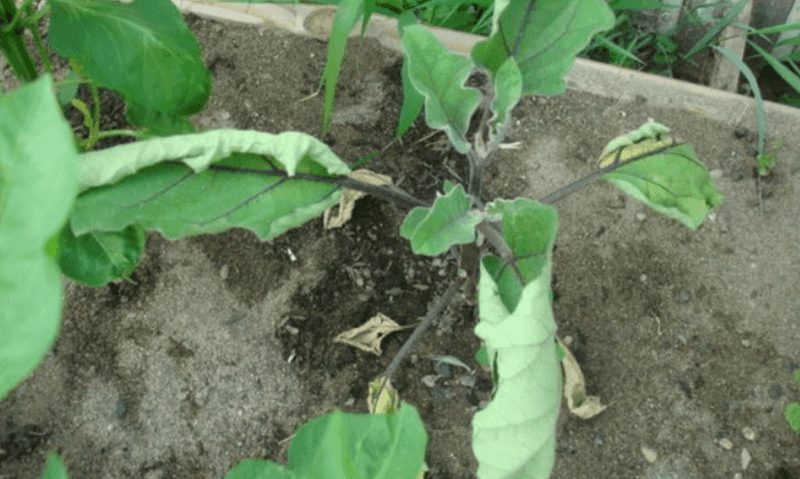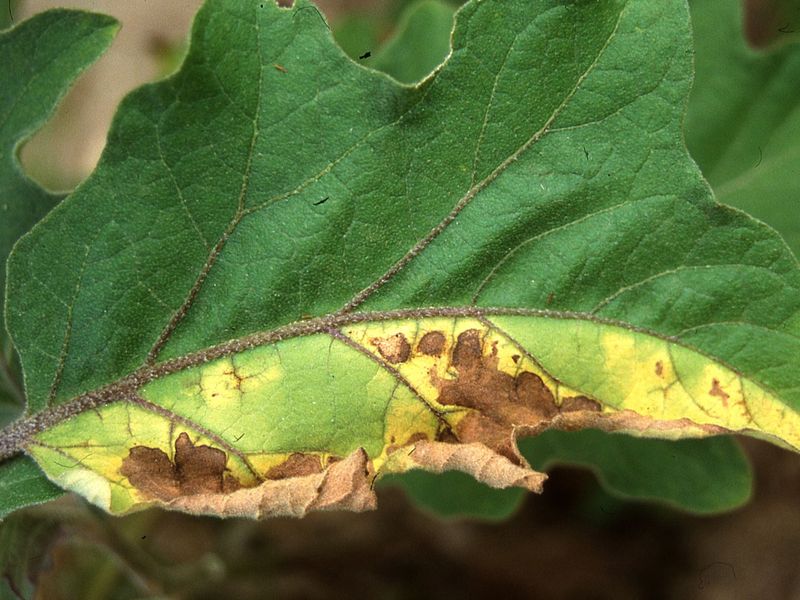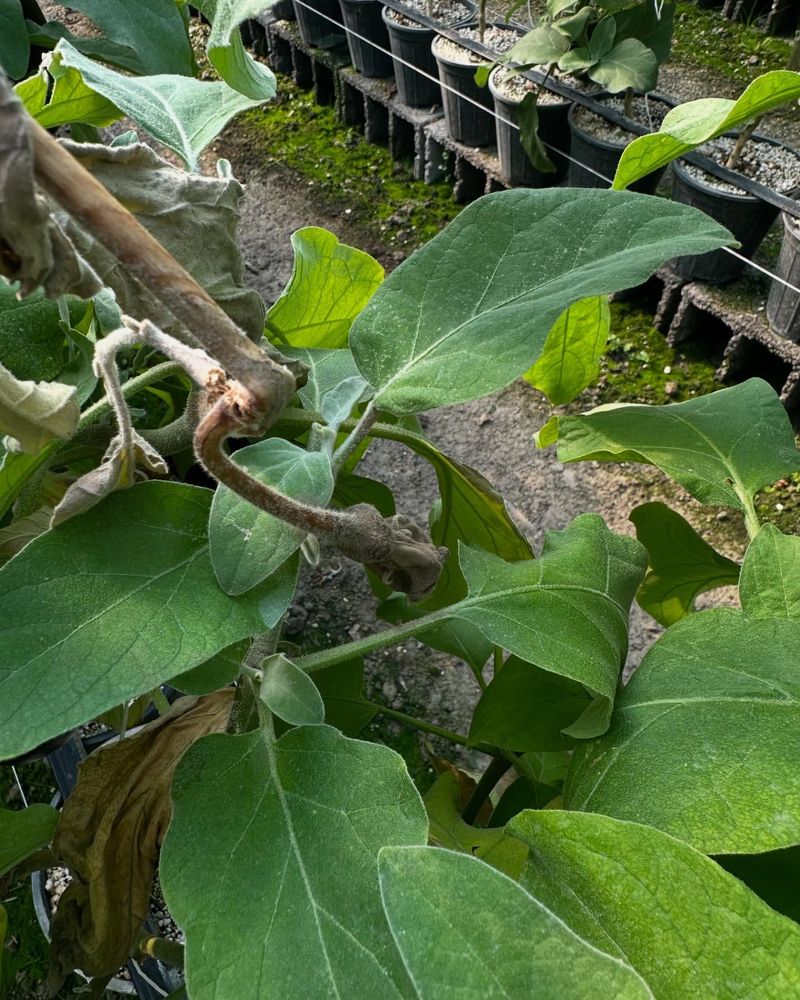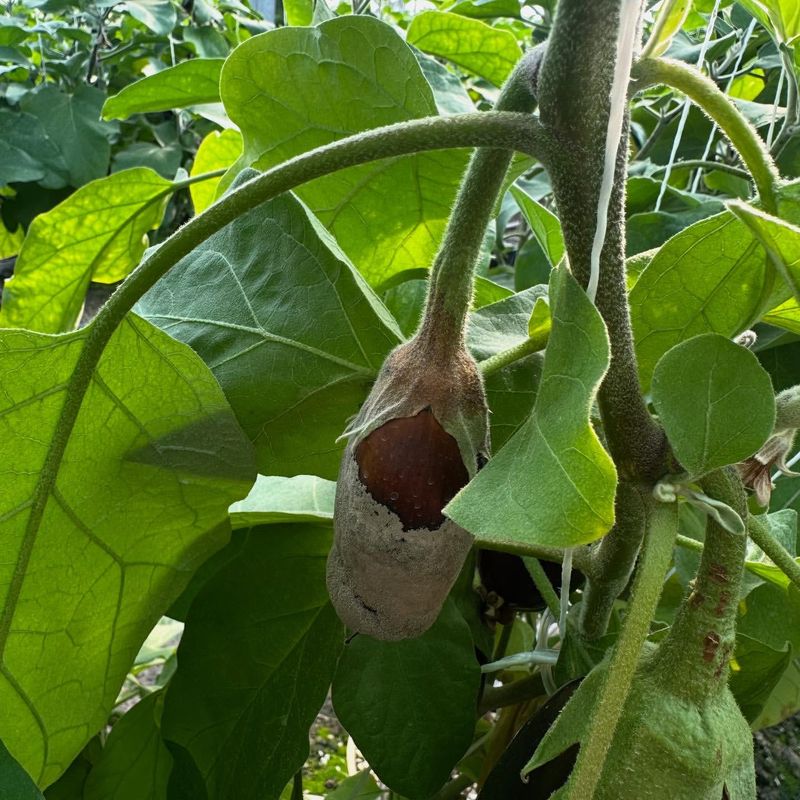Noticing your eggplants looking a bit under the weather lately? Those curling leaves aren’t just a cosmetic issue—they’re your plants crying out for help. July’s combination of heat waves and sporadic rainfall has created the perfect storm for eggplant stress across gardens everywhere.
Many gardeners have been messaging me about their formerly healthy eggplants suddenly developing twisted, cupped leaves. The frustration is real when you’ve nurtured these plants from seedlings only to watch them struggle during what should be their prime growing season.
Understanding what’s causing those curled leaves is the first step toward saving your harvest. Let’s explore the most common culprits behind this month’s eggplant leaf curl epidemic and how you can address each issue before your plants decline further.
1. Aphid Infestations
Those tiny green or black insects clustering under leaves are sucking the life from your plants. Aphids pierce plant tissue and extract sap, causing leaves to curl as a defensive response.
I spotted these pests on my eggplants last week after a few unusually cool nights. Their rapid reproduction means a small problem quickly becomes overwhelming.
Spray affected plants with insecticidal soap or a strong stream of water to dislodge them. Introducing ladybugs can also help keep aphid populations in check naturally.
2. Broad Mite Damage
Unlike spider mites, broad mites are nearly invisible to the naked eye but cause distinctive upward leaf curl. The damaged leaves develop a bronzed appearance along with distortion and stunting.
These microscopic pests thrive in hot, humid conditions—exactly what we’ve been experiencing this month. Their toxic saliva causes growth deformities as the plant develops.
Sulfur-based sprays offer effective control. Apply in the evening when temperatures are cooler to avoid leaf burn while targeting these tiny invaders.
3. Excessive Heat Stress
When temperatures climb above 95°F for consecutive days, eggplants respond by curling leaves to reduce water loss. This natural defense mechanism limits the leaf surface exposed to intense sunlight.
My own plants showed this reaction during that brutal heat wave mid-month. The upper leaves curled inward while lower leaves remained relatively normal.
Provide temporary shade using row covers or shade cloth during peak afternoon hours. Deep watering in early morning helps plants withstand the day’s heat better.
4. Herbicide Drift
Chemical drift from nearby weed control can wreak havoc on eggplants. Even minute amounts of broadleaf herbicides cause distinctive cupping and twisting of new growth.
The damage pattern typically appears on one side of the plant facing the source of drift. Growth becomes stunted, and leaves develop unusual puckering or strapping.
Unfortunately, there’s no remedy for affected leaves. Focus on protecting new growth by identifying and eliminating the herbicide source, then provide optimal growing conditions to help plants recover.
5. Nutrient Deficiencies
Calcium deficiency often shows up as curled leaf tips and margins. Heavy rainfall this month may have leached calcium from your soil, making it unavailable to plants despite being present.
Magnesium shortages create similar symptoms, with leaves curling upward while remaining green. Potassium deficiencies cause marginal yellowing along with the curl.
A complete soil test reveals exactly what’s missing. For quick relief, foliar sprays containing calcium or a balanced fertilizer can help plants recover while you address underlying soil issues.
6. Whitefly Feeding
Shake an affected branch and watch for tiny white insects flying up—that’s your confirmation of whiteflies. These pests cluster beneath leaves, sucking plant juices and causing yellowing and curling.
The sticky honeydew they excrete attracts sooty mold, further stressing plants. Left unchecked, whiteflies can seriously reduce yields and plant vigor.
Yellow sticky traps help monitor populations. Insecticidal soaps work well for control when applied to leaf undersides where these pests hide and feed.
7. Irregular Watering
Eggplants demand consistent moisture to thrive. The fluctuating rainfall patterns this month followed by dry spells create stress that manifests as leaf curl.
When soil moisture swings between soggy and bone-dry, plants cannot develop properly. The stress signals travel throughout the plant, causing leaves to curl as water uptake becomes erratic.
Maintain even soil moisture with mulch and regular deep watering. Aim for about 1-1.5 inches of water weekly, adjusting for rainfall and temperature.
8. Thrips Invasion
Thrips are tiny insects that rasp plant tissue and suck out contents, leaving silvery streaks and triggering leaf curl. Their feeding damages cells and disrupts normal growth patterns.
Last summer, my eggplants suffered a thrips outbreak after nearby onions were harvested. The pests simply migrated to the nearest succulent crop.
Look for their slender, straw-colored bodies with a magnifying glass. Blue sticky traps attract and capture them, while neem oil applications help reduce populations when applied weekly.
9. Tomato Yellow Leaf Curl Virus
Despite its name, this virus affects eggplants too, causing upward leaf curl, yellowing, and stunted growth. Whiteflies spread this devastating disease between plants.
Symptoms typically appear 2-3 weeks after infection. The distinctive upward curling creates cup-shaped leaves that remain small and clustered near stem tips.
There’s no cure once plants are infected. Remove and destroy affected plants to prevent spread, control whitefly populations, and choose resistant varieties for future plantings.
10. Root-Knot Nematodes
These microscopic soil-dwelling worms attack plant roots, forming knots that block water and nutrient uptake. The restricted flow causes wilting and leaf curl even when soil appears adequately moist.
In my experience, this problem is easy to overlook until plants show serious decline. Dig up a struggling plant and check for swollen, knotty roots—the telltale sign of infestation.
Crop rotation and adding organic matter help suppress populations. For severe cases, solarizing soil under clear plastic during hot weather can reduce nematode numbers.
11. Transplant Shock
Recently transplanted eggplants often respond with temporary leaf curl as they adjust to new conditions. The stress of the move disrupts water uptake while roots establish in their new environment.
Plants set out during this month’s heat face particular challenges. The combination of root disturbance and environmental stress triggers protective curling.
Provide shade for the first week after transplanting and water consistently but not excessively. Most plants recover within 7-10 days as new roots develop.
12. Spider Mite Infestations
These tiny arachnids thrive in hot, dry conditions—exactly what many gardens have experienced this month. They pierce leaf cells and extract contents, causing stippling, bronzing, and curling.
Look for fine webbing between leaves and stems, especially on the undersides. A white paper test helps detect them—tap affected leaves over paper and look for tiny moving specks.
Regular strong water sprays to leaf undersides disrupt their colonies. Predatory mites offer excellent biological control for persistent problems.
13. Phytoplasma Diseases
Transmitted by leafhoppers, phytoplasmas are specialized bacteria that infect plant phloem tissue. Infected eggplants develop witch’s broom growth patterns with clustered, curled leaves.
Additional symptoms include yellowing, stunting, and abnormal flower production. Plants may produce small, deformed fruits or none at all as the disease progresses.
Control focuses on removing infected plants and managing leafhopper populations with floating row covers or appropriate insecticides. Maintain weed-free areas around gardens to reduce alternate hosts.
14. Cold Damage
Surprising cold snaps can occur even in summer months, especially in areas with significant day-night temperature swings. Eggplants are tropical plants that suffer when temperatures drop below 50°F.
Cold-damaged leaves curl downward and may develop dark areas as cells die. New growth emerging after cold exposure often shows the most pronounced symptoms.
Row covers provide valuable protection during unexpected temperature drops. For container plants, moving them to sheltered locations overnight prevents damage during unseasonable cold.
15. Excessive Nitrogen
Too much nitrogen fertilizer creates lush, weak growth with curled, oversized leaves. The rapid cell expansion causes distortion as leaves grow faster than they can properly develop.
Many gardeners make this mistake when trying to boost production during mid-season. The dark green, curled foliage might look healthy at first glance but actually indicates imbalanced nutrition.
Switch to lower-nitrogen, higher-phosphorus fertilizers during fruiting. Water deeply to help leach excess nitrogen, and avoid additional fertilizer until plants show balanced growth.
16. Verticillium Wilt
This soil-borne fungal disease enters through roots and blocks water-conducting tissues. Affected plants show wilting and curling on one side first, often starting with lower leaves.
A distinctive V-shaped yellowing pattern develops on leaf margins as the disease progresses. Cutting stems reveals brown vascular discoloration—the fungus clogging the plant’s circulatory system.
No effective treatment exists once plants are infected. Practice crop rotation with non-susceptible plants and choose resistant varieties for future plantings.
17. Poor Air Circulation
Densely planted eggplants without adequate spacing create humid microclimates where leaves can’t properly transpire. The resulting moisture buildup leads to curling as plants struggle to regulate internal water pressure.
This problem becomes particularly evident during periods of high humidity. Leaves in the center of crowded plants show the most severe symptoms.
Prune some lower leaves and thin plants to improve airflow. Position plants with prevailing winds in mind to create natural ventilation corridors through garden beds.
18. Sunscald Recovery
When eggplant leaves suffer sunburn during intense summer days, the damaged areas die while surrounding tissue curls in response. This protective reaction helps shield remaining healthy tissue from further damage.
I noticed this pattern on my plants after we had that stretch of 100-degree days with intense sunlight. The curling occurred primarily around white or brown patches of scalded leaf tissue.
Allow affected leaves to remain unless severely damaged. New growth will develop with better adaptation to current light conditions.

